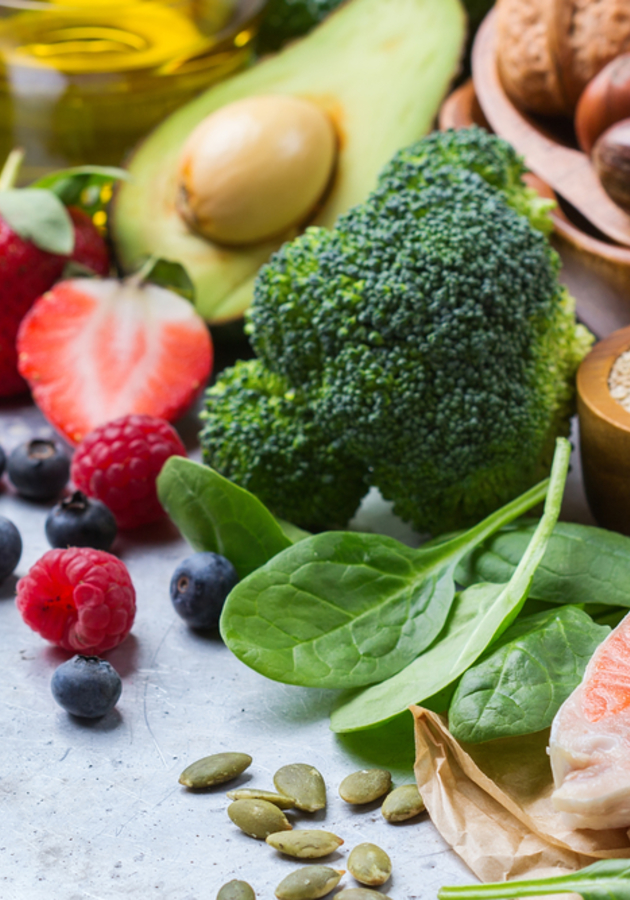Described by the New York Times as the “Priestess of Waste-Free Living,” Franco-American author Bea Johnson has started a revolution from her own kitchen – the zero-waste lifestyle movement. Just a decade ago, nobody knew what “zero waste” meant, but since Johnson published her groundbreaking 2013 bestseller, “Zero Waste Home,” the phrase has become part of the mainstream.
As defined by Johnson, “Zero Waste is a philosophy based on a set of practices aimed at avoiding as much waste as possible.” In practice, it encompasses five steps – Johnson’s 5 Rs – which take into consideration both direct and indirect forms of consumption. More specifically, “the first and second Rs address the prevention of waste, the third R thoughtful consumption, the fourth and fifth Rs the processing of discards.” Get ready to learn all about them – and prepare to revolutionize your relationship with your home and the environment!
Step No. 1: Refuse (what you don’t need)
The first R of Zero Waste – refusing what you don’t need – addresses the indirect type of consumption, “the handouts and marketing materials that creep into our lives.” Even though it is not difficult to recycle them all, contrary to popular opinion, Zero Waste doesn’t promote recycling. Instead, it is much more about eliminating and handling waste materials, with recycling seen as “the last resort before the landfill (as is composting).”
There are many refusing opportunities in our consumer-driven societies, but the following four areas are key and should be addressed correctly:
- Single-use plastics (SUPs): “Disposable plastic bags, bottles, cups, lids, straws, and flatware.” These products – all of them non-recyclable – are the source of so much pollution in the world that refusing them should be your priority. Anything else makes you an accomplice in the death of millions of animals.
- Freebies: “Hotel room toiletries, food samples, party favors swag bags.” Free things are usually made of plastic and break easily. Usually, you take them because they are free, and not because you actually need them. Saying “no” to freebies translates into less clutter at home, and a lighter global carbon footprint.
- Junk mail. Even though it is almost impossible to block waste entering your mailbox – Johnson claims her battle against the United States Postal Service was “the most frustrating part of [her] Zero Waste Journey” – you should try putting into action a no-tolerance policy. Transferring junk mail straight from the mailbox in the recycling bin is easy but costs money, time and precious energy resources. Not to mention, it follows deforestation rather than preventing it.
- Unsustainable practices. These include everything from accepting receipts and business cards to buying expensive packaging and wrapping every snack for your kids in plastic. Why are we doing these things in the first place? “Tradition” is not an acceptable explanation.
Of all the Rs, “refuse” might be the most difficult to implement, because saying “no” to waste often means saying “no” to people, and in many cases, this might seem awkward and even impolite to others. Even so, refusing waste is the socially responsible choice, so it’s important that you develop the right attitude from the outset. Be friendly but firm in your “no’s”, and opt either for brief explanations such as “I’m sorry, but I have gone paperless,” or other thoughtful justifications that might inspire change in the people around you. Essentially, that is your final objective. Refusing, as Johnson explains, is “a concept based on the power of collectivity.” Though it doesn’t necessarily make the waste disappear, the more people practice it, the greater the demand for alternatives will become.
Step No. 2: Reduce (what you do need and can’t refuse)
Refusing is simple. You just need to say “no” to various types of indirect consumption. Reducing, on the other hand, is much more complicated, not only because it deals with direct consumption, but also because it affects your comfort. Consequently, it’s also a pretty individual affair: everyone has different expectations in life, and not everyone is able to reduce their consumption to the same extent as others. For example, if you live 10 minutes away from your workplace, you can refuse using your car altogether. However, if you live in a rural area where public transport is unavailable, the best thing you can do is reduce your car usage.
Even though reducing begins with self-assessment and nobody knows the realities of your own life better than you, Johnson suggests three practices that are applicable in many cases:
- Evaluate past consumption. Start questioning the things you’ve bought and the things you own. Who knows how many of them you’ve never used? All those jumpers you’ve never worn, all those pens that ran out of ink a decade ago, the obscure kitchenware you were tricked into buying by cunning salespeople – you don’t need any of that, do you? Donate or sell these things to simultaneously reduce waste and support collective generosity and the secondhand market.
- Curb current and future consumption in amount and in size. After discovering what you don’t need, stop buying it! Also, consider curbing future consumption in some areas where reducing is always possible. For example, you can bike more and drive less, you can do without some of your technology and you don’t really need to print everything out on paper. Start asking yourself if you can buy less of what you do need, and consider if the number or size of what you are buying fits your needs. Try choosing products you can reuse or recycle.
- Decrease activities that support or lead to consumption. TV commercials and magazine ads are very capable of generating needs in people. Limiting your media exposure means not giving them the chance to trick you into buying things you don’t need. Moreover, it means giving yourself the chance to find satisfaction with what you already have. Believe us, you already have plenty.
Step No. 3: Reuse (what you consume and can’t refuse or reduce)
Reusing is not the same as recycling. While the latter can be defined as “reprocessing a product to give it a new form,” the former means “utilizing the product in its original manufactured form several times to maximize its usage and increase its useful life.” Naturally, by extending the useful life of purchased goods, reusing simultaneously eliminates waste and alleviates resource depletion. Here’s how you can accomplish each of the three:
- Eliminate wasteful consumption. The need for wasteful SUPs and packaging can be eliminated by way of reusable totes or cloth bags. But, that’s merely the beginning: “for every disposable item available,” Johnson claims, “a reusable or refillable alternative exists.” For example, you can swap paper tissues for washable handkerchiefs and paper towels for cotton cloths. Tea tastes better when it doesn’t come from teabags, and though less convenient, French Press coffee is a more responsible choice than coffee pods. The list, needless to say, goes on.
- Alleviate resource depletion. Buy used goods. Your shopping should always start at thrift stores and garage sales, or at antique stores and eBay. Also, try buying smart, by opting for things that are “reusable/refillable/rechargeable, repairable, versatile, and durable.” Finally, start participating in “collaborative consumption.” Rather than buying items for a single use, borrow and rent what you need, in addition to loaning and trading what you have. We’re not just talking about lawn mowers, but also about cars, office spaces and even houses!
- Extend the useful life of necessities. There are four ways to achieve this. The most obvious one is repairing broken things rather than replacing them. Secondly, you can rethink the usage of some other goods. For starters, drinking glasses can be used as pen holders as well. Next, you can return some items to a store for reuse – dry cleaning wire hangers being the obvious first candidate. Finally, you can rescue some things from recycling by giving them a temporary second life. For example, before going to the landfill, worn-out clothing can be repurposed as rags.
Step No. 4: Recycle (what you cannot refuse, reduce, or reuse)
In “Cradle to Cradle” – the 2002 manifesto of the eponymous environment-aware design movement of the 21st century – American architect William McDonough and German chemist Michael Braungart likened recycling to an aspirin “alleviating a rather large collective hangover – overconsumption.” In other words, as great and profoundly important as it is, recycling is not the final solution to our waste problems, but rather a remedy dealing with its superficial symptoms. Rely on it too much, and waste will become resistant to it. Moreover, being a “coordinated effort of manufacturers, municipalities, consumers, and recyclers,” recycling depends on just too many variables to be dependable. That’s why it is important to see it as a last resort rather than the preferred choice.
Of course, recycling is always a better option than the landfill. Although essentially “a form of disposal […] it does save energy, conserve natural resources, divert materials from landfills, and create a demand for recovered materials.” So, you should always have it in mind when buying things. Naturally, it is preferable to choose items that can be reused, but in case that is not an option, go for goods made of materials that can be recycled over and over again such as steel, aluminum, glass or paper. Bear in mind that plastic items are not recycled but downcycled, meaning that they are turned into products of lower quality and functionality than the originals.
Here are a few other things to keep in mind about recycling:
- Inform yourself. Learn what your community can or cannot recycle at the curb. Visit your local materials recovery facility (MRF) to discover more about plastics recyclability.
- Allocate recycling locations. Make recycling convenient for you at your house by designating handy recycling sites in your kitchen and your home office.
- Find collection sites for hard-to-recycle items. Some objects – such as worn-out shoes, corks, batteries, and paint – can only be recycled at special locations. Locate sites which collect them with the help of the internet or a specialized app.
- Assign separate containers as per drop-off location.
Step No. 5: Rot (compost) the rest
Rotting, better known as composting, means utilizing nature’s way of recycling organic materials to deal with your own waste. Considering that a third of household waste is organic, composting makes a lot of sense and can introduce a lot of change in the world.
Choosing a compost method that will work for you is not easy. You should take into consideration many factors, such as food consumption, end products, pests, pets, cost, location, aesthetics, and capacity. Even so, once you do your research and install the system, composting is a satisfying and rewarding experience.
Think about it this way: you don’t know what the plastic you recycle will become, but you can watch with your very own eyes how a few worms transform your veggie scraps into nutrient-rich material and your soil into what gardeners refer to as “black gold.” The fact that the same soil will grow even more, and better vegetables afterward makes rotting a big “closed-loop waste cycle” upon which, as Johnson concludes, our manufacturing model should have been based from the beginning.
Final Notes
By her own admission, the philosophy of the 5 Rs has been Johnson’s method to “reducing [her] family’s annual trash to a jar since 2008.” Since 2013 and the publication of “Zero Waste Home” it has been adopted in hundreds of thousands of households worldwide.
Talk about books that make a difference!
12min Tip
Stick to the hierarchy of the 5 Rs: refuse, reduce, reuse, recycle, rot. Or, just abide by the wisdom of that ancient proverb, “use it up, wear it out, make it do, or do without.”





























